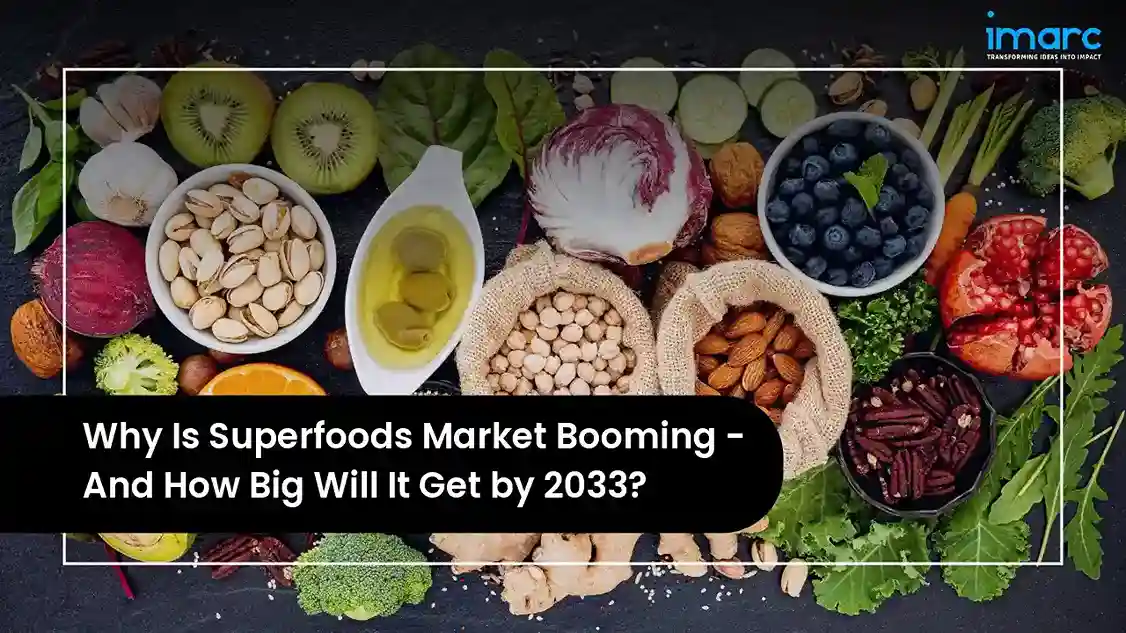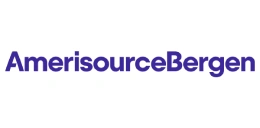Why Is Superfoods Market Booming - And How Big Will It Get by 2033?

Superfoods Market Trends 2025-2033: Health Revolution, Growth Drivers, and Industry Outlook
People’s relationship with food is undergoing a profound transformation. No longer just a source of fuel, what individuals eat is now seen as a cornerstone of the overall well-being—a tool to boost immunity, sharpen focus, support digestion, and build long-term resilience. This evolution in consumer consciousness is creating a powerful demand for foods that are functional, organic, and transparently made with real ingredients. Brands are coming up with plant-based innovations, fortified beverages, and personalized nutrition plans that prioritize health and sustainability. In this new landscape, superfoods have moved from the fringe to the forefront. These nutrient-dense ingredients are becoming standard features in new product lines as companies seek to connect with a generation of health-conscious consumers. According to IMARC Group, the global superfoods market size reached USD 179.8 Billion in 2024.

Explore in-depth findings for this market, Request Sample
The New Food Philosophy: Unpacking the Core Market Catalysts
The Green Wave: How Plant-Based Eating Catapulted Superfoods to Stardom
At the forefront of this movement is the global embrace of plant-based diets. As vegan and flexitarian lifestyles become mainstream, consumers are actively seeking robust, nutrient-rich alternatives to animal products. Superfoods like quinoa, chia seeds, spirulina, and açaí fit this need perfectly, offering concentrated sources of protein, fiber, antioxidants, and essential fatty acids. To meet this surging demand, companies are innovatively embedding these ingredients into different food items. In 2024, UK-based Moving Mountains came up with a new Superfoods range featuring plant-based burgers, sausages, and falafel, which are made with ingredients, such as quinoa and chia seeds. The nutrient-rich, soy- and gluten-free products focus on supporting the gut health and meeting demand for healthier foods.
Beyond the Label: The Demand for Functional Foods and Radical Transparency
Today’s consumers expect their food to do more. This quest for functional foods, which offer specific health benefits, is a primary engine for the superfoods market. In response, key players are launching items engineered to boost immunity, enhance gut health, or support mental clarity. In 2024, Singapore-based Hives Keeper captured this trend by launching the country’s first superfood-infused raw honey, blending natural ingredients like ginger and lime to create healthier condiments. This desire for function is paired with a demand for simplicity. Consumers are championing clean-label products free from artificial additives and allergens, pushing manufacturers to innovate with minimally processed ingredients and be transparent about their sourcing. The convergence of functionality and clean labeling has become the new standard, broadening the market’s appeal to health-conscious buyers seeking natural and effective wellness solutions.
The Anatomy of Superfoods: A Look at the Leading Categories
Top Superfood Segments by Product Type
- Fruits: Fruits represent the largest segment, holding around 29.6% of the market share. The segment consists of superfoods, such as acai berries, blueberries, goji berries, and pomegranates, all abundant in antioxidants, vitamins, and fiber. These fruits enhance heart wellness, boost immunity, and aid in anti-aging. Their growing incorporation into smoothies, juices, snacks, and supplements boosts their popularity.
- Vegetables: Nutrient-rich superfood vegetables consist of kale, spinach, broccoli, and beetroot, recognized for their high nutritional value. Rich in vitamins A, C, and K, iron, and antioxidants, they aid in detoxification, immune function, and heart health. These vegetables are commonly eaten in the form of salads, beverages, powders, and nutritious dishes. The growing popularity of veganism and clean eating is enhancing this segment's attractiveness to health-conscious consumers worldwide, particularly within urban and fitness-focused demographics.
- Grains & Seeds: Quinoa, chia, flaxseeds, and hemp are grains and seeds that provide abundant protein, fiber, healthy fats, and vital minerals. They support digestive wellness, cardiovascular health, and lasting energy. With the rising popularity of gluten-free and plant-based diets, these superfoods are more frequently incorporated into cereals, bars, and baked goods. Their adaptability and health benefits persistently fuel demand across global consumer segments focused on fitness, wellness, and weight management.
- Herbs & Roots: This segment features turmeric, ginger, ginseng, ashwagandha, and maca, which are historically appreciated for their healing and adaptogenic properties. Recognized for lowering inflammation, enhancing immunity, and increasing resilience to stress, they are favored in teas, supplements, tonics, and alternative therapies. As interest grows in ancient and natural healing methods, the herbs and roots are seeing significant demand from wellness consumers, herbal medicine enthusiasts, and alternative health practitioners globally.
- Others: Other types of superfoods include algae, mushrooms, and specialty botanicals with distinct nutritional or therapeutic benefits. These superfoods cater to niche health needs, such as cognitive support, energy enhancement, and immune modulation. As research validates their efficacy, they are increasingly incorporated into powders, capsules, and functional beverages.
Global Appetites: Mapping the World's Superfood Strongholds
North America: The Fitness-Fueled Frontier
North America leads the market, accounting 39.8% market share, attributed to its early adoption of health and wellness trends, which laid the foundation for a robust functional food industry. This region benefits from a mature consumer base that prioritizes disease prevention, clean eating, and fitness-driven lifestyles. Interest in nutrient-dense foods like seeds, berries, and adaptogenic herbs continues to grow, supported by widespread awareness about plant-based and sustainable nutrition. A broad array of product formats, ranging from powders and beverages to snacks and supplements, is bolstering the market growth. Consumers increasingly seek convenient, science-backed products that support energy, heart health, and overall wellness. For example, in 2024, BioHarvest Sciences launched its VINIA® SuperFood Functional Tea line, expanding its popular VINIA® supplement into the North American functional tea market. The teas contained piceid resveratrol, clinically shown to improve blood flow and energy. With four blends and sustainable sourcing, the line aimed to deliver both health benefits and superior taste. As a result, the superfoods market size in North America continues to expand steadily, reinforcing the region’s leadership in global health and nutrition trends.
Europe: The Bastion of Organic and Sustainable Eating
Europe showcases a well-established and consistently expanding superfoods market, significantly shaped by the region’s emphasis on organic practices and dedication to sustainable lifestyles. Shoppers emphasize clean-label items, responsible sourcing, and natural components, fueling the desire for nutrient-dense foods that enhance digestion, boost immunity, and promote heart well-being. In line with this trend, in 2025, Edible Garden announced plans to acquire Narayan Group, a European superfood and organic coconut producer. Both companies expect the deal to support sustainable growth and meet rising demand for plant-based, organic foods. Furthermore, the area's focus on organic certification is cultivating trust and loyalty among consumers who prioritize health. Furthermore, regulatory frameworks promoting transparency and food safety enhance credibility, while innovation in fortified foods, packaging, and personalized nutrition keeps the market dynamic. Broad retail and e-commerce access ensures superfoods remain central to European dietary trends.
Asia Pacific: A Renaissance of Traditional Remedies
The revival of traditional superfoods in Asia Pacific region is a significant factor propelling the growth of the market. Consumers are progressively opting for traditional ingredients, such as turmeric, ginger, goji berries, and ginseng, merging classic wellness methods with contemporary health trends. The growing awareness about preventive health measures, along with a transition to plant-based eating, is catalyzing the demand for these nutrient-dense foods. Urbanization, increased disposable incomes, and digital accessibility via e-commerce platforms have broadened market reach even more. The region’s longstanding cultural reliance on natural remedies, along with advancements in product formats, establishes Asia Pacific as an important contributor to both the global consumption and production of superfoods.
Latin America: An Indigenous Revival
The market for superfoods in Latin America is gaining traction, driven by a revitalized emphasis on native ingredients and cultural traditions. Throughout the region, consumers are progressively adopting native superfoods, such as amaranth, cacao, and maca, which are renowned not only for their health advantages but also for their cultural and historical importance. This change is backed by a rise in regional-owned brands and entrepreneurs who are integrating tradition with contemporary wellness trends. With the rise of storytelling, local sourcing, and culturally meaningful branding, the market is shifting from niche products to wider retail attractiveness, establishing Latin America as a key contributor to global superfood innovation.
Middle East & Africa: Cultivating a High-Tech Health Ecosystem
The Middle East and Africa's superfood market is growing, fueled by investments in agritech and functional nutrition. Urban health awareness drives demand for spirulina, moringa, and baobab. Government and private initiatives bolster food security through vertical farming and sustainable agriculture, reducing import reliance. For instance, in 2024, UAE's Future Food Foundry (3F) invested $5 million in Greeneration, a Dubai vertical farm, to expand into sustainable superfoods and plant-based nutrition, aiming to boost local food security and promote gut/brain health via spirulina, adaptogens, and functional foods.
From Niche to Necessity: The Superfoods Market Trajectory (2025-2033)
According to IMARC Group’s projections, the global superfoods industry will reach USD 265.6 Billion by 2033, exhibiting a CAGR of 4.4% during 2025-2033. The growth will be supported by the following factors:
- Superfoods for Lifestyle Diseases: The growing health consciousness and the rising incidence of lifestyle-related illnesses like obesity, diabetes, and heart diseases are significant factors influencing the global superfoods market. For instance, according to the findings from the 11th edition of the International Diabetes Federation’s Diabetes Atlas, published in April 2025, 589 million adults (ages 20-79) are affected by diabetes globally. The anticipated count of adults with diabetes is expected to hit 853 million by 2050. Superfoods, abundant in vital nutrients and antioxidants, are considered natural solutions for sustaining long-term wellness. Increased access to health information via digital platforms and healthcare experts is strengthening this change, encouraging nutrient-rich foods as a favored option for proactive health management.
- Digital Shopping Transforms Superfood Discovery: Digital platforms boost superfood accessibility for health-focused, convenience-driven consumers. E-commerce offers wide selections, clear labeling, and personalized suggestions, transforming discovery and purchase through subscriptions, apps, and bundles. This drives adoption, especially among digital natives and busy shoppers. For instance, in 2025, KIKO Live's ONDC Buyer app launched, simplifying grocery ordering via photo/paste, offering 30-minute delivery, and aiming to support over 10,000 small retailers with digital tools by year-end.
- Celebrity Endorsements and Influencer Power: Influencers and celebrities significantly shape consumer food choices, boosting interest in superfoods. Their selective content and personal recommendations build trust, especially with younger, digital audiences. They transform health trends into lifestyle movements, enhancing superfood appeal and encouraging adoption. This impact improves brand awareness, builds trust, and accelerates product exploration, making influencer collaborations a key marketing tactic for brands promoting superfoods as vital to modern, healthy lifestyles.
- Innovation Backed by Research: Ongoing scientific advancements boost superfood credibility and appeal. Improved extraction, clinical research, and functional blends enable specialized health products targeting immunity, digestion, and cognitive function. For example, in 2025, University of Birmingham researchers identified Chlorella Vulgaris as a promising superfood. This protein, vitamin, and antioxidant-rich microalga offers immune support and detoxification, with sustainable cultivation benefits for food security and climate solutions. Brands investing in research can deliver evidence-based, differentiated products, fostering trust and competitive advantage.
- Premium Products and Ethical Sourcing Win Buyers: Premiumization and sustainable sourcing are driving growth in the superfoods market, as consumers prioritize quality, ethics, and environmental impact. Demand for organic, ethically harvested, and traceable superfoods encourages brands to offer high-end products that justify premium pricing. This focus on sustainability not only meets consumer expectations but also supports long-term market viability by promoting responsible production practices. In July 2025, Aduna reintroduced its Superfood Blends in sustainable, recyclable cardboard tubs following a 101% increase in sales. The brand currently aids more than 3,300 women in Ghana and Burkina Faso by promoting fair trade practices, which have doubled their income. Aduna provides sustainable wellness products that promote positive social and environmental effects, holding B Corp, FairWild, and People & Planet First certifications.
The Superfoods Opportunity: A New Era for Food and Wellness
The superfoods market is rapidly maturing as consumers increasingly seek functional foods for preventive health. This shift fuels the demand for nutrient-rich ingredients that offer tangible benefits like improved immunity and gut health, with a strong preference for organic and sustainably sourced products. This creates vibrant growth prospects for producers, retailers, and startups alike. To stay competitive, the largest superfood companies are leading the way by investing heavily in research and innovation to expand their portfolios. In this dynamic sector, the brands that will ultimately thrive are those that successfully merge scientific validation with transparency and authentic effectiveness.
How IMARC Group Supports Innovation in Superfoods Market:
IMARC Group empowers stakeholders across the food, nutrition, and wellness industries with the strategic intelligence necessary to thrive in the dynamic and competitive superfoods market. Our services enable clients to identify emerging opportunities, manage potential risks, and foster innovation in superfood products and solutions through:
- Market Insights: Analyze global superfood trends, including demand for plant-based, immune-boosting, and functional foods, highlighting adaptogens, antioxidants, and gut-health enhancers.
- Strategic Forecasting: Anticipate future superfood developments: food tech advances, evolving consumer preferences (clean-label, sustainable), and innovative delivery formats (powders, beverages, snacks).
- Competitive Intelligence: Monitor key players' innovations and strategies, including natural sourcing, sustainable packaging, functional blends, D2C marketing, and disruptive startups.
- Policy and Regulatory Analysis: Understand global food safety, labeling, health claims, and import/export policies, assessing their impact on market access and compliance.
- Tailored Consulting Solutions: Provide customized consulting, from feasibility studies to go-to-market strategies, offering actionable insights for the evolving superfoods market.
As the superfoods industry continues to expand, IMARC Group remains a trusted partner—delivering critical market intelligence, driving innovation, and enabling informed decision-making to support sustainable growth and shape the future of health-conscious nutrition.
Our Clients
Contact Us
Have a question or need assistance?
Please complete the form with your inquiry or reach out to us at
Phone Number
+91-120-433-0800+1-201-971-6302
+44-753-714-6104
-(1)_11zon.webp)










